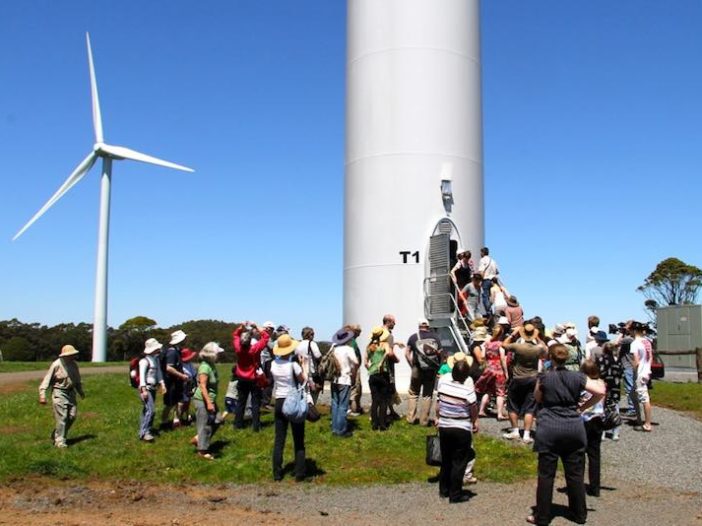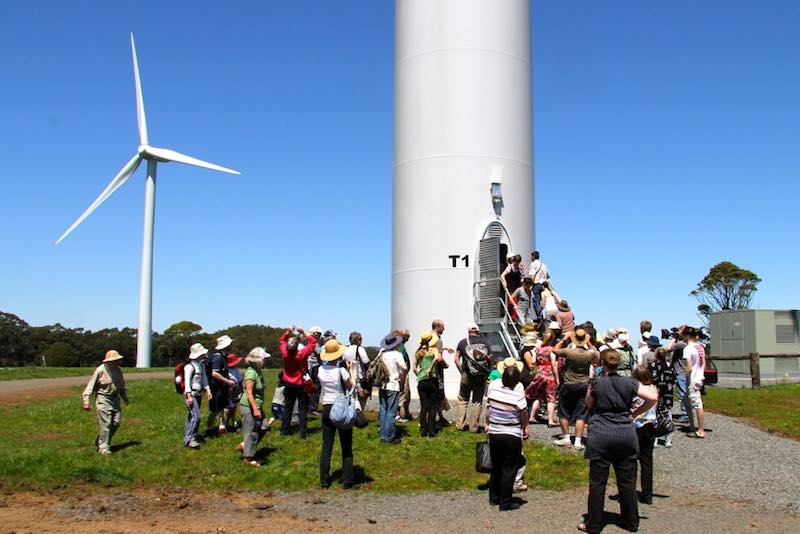
 It takes a village to raise a child, so the old proverb goes. But can the same be said about building a renewable energy powered grid?
It takes a village to raise a child, so the old proverb goes. But can the same be said about building a renewable energy powered grid?
According to two separate reports published last week, communities will have a vital role to play in the success of Australia’s shift to renewables – and in two major ways.
The first, as outlined in a study headed up by the University of Queensland, is in making the transition to renewables fair and beneficial to all – including those who are excluded from the market by cost, knowledge barriers or restrictive housing arrangements.
UQ School of Earth and Environmental Sciences researcher Annie McCabe says that as renewable energy technologies have become cheaper, more efficient and theoretically more attainable, so have the scales of energy justice started to balance up.
“This has created opportunities for people to join initiatives focused on energy rights, autonomy, and social justice – bringing together communities and people unable to join the energy market,” McCabe said.
“These community energy groups create environmental and socioeconomic benefits through return on investment and provide a source of economic development, diversification, social capital and autonomy in the local community.”
We have seen this already happening with a number of innovative projects, ranging from regional solar bulk-buy schemes, to community solar farms, and even a community-based negotiation of renewable-friendly network tariffs.
As Giles Parkinson reported here, those negotiations between the Victorian regional community of Newstead and electricity distributor, Powercor, have led to a two-year trial on new network fees, allowing the community to install solar and share the output without being hit by further network charges for each kilowatt they consume.
The breakthrough deal breaks the nexus between lower energy use and soaring grid charges, and ensure that everyone benefits from a local renewable energy transition, and not just those who can afford it.
It also makes community-owned solar farms, and sharing that solar output, more attractive, by eliminating the perverse incentive for individuals to preference rooftop solar, over a shared solar farm, despite the latter option having a lower $/kW installed cost.
And policy-makers are starting to understand the importance of community, too – particularly in states where elections are being held.
In Tasmania, which went to the polls at the start of the month, the re-elected Liberal government recently announced backing for a community solar microgrid project in “one of the lowest socio-economic areas in Australia.”

And in South Australia, which goes to the polls this weekend, Nick Xenophon’s independent party SA BEST, unveiled a policy plan to lower power prices using a co-operative model of community electricity trusts.
As we reported here, the co-operative retailer, to be named the Community Electricity Trust of SA (cETSA), would be made up of 50,000 lower-income households and up to 5000 small businesses, and power prices for those members would come down by 20 per cent.
But as Victoria’s renewable energy advocate Simon Corbell told last week’s Wind Industry Fourm, “much more work is needed” on the policy front if we want to meet our Paris climate targets.
“(We) need national agreement on a range of measures to support just transition,” he said.
“There are communities who are exposed to the vulnerabilities of a shift away from fossil fuel generation. And they deserve to be supported, they deserve to be given the opportunities that come from a transition to new low-cost forms of electricity generation.”
And McCabe agrees. In particular she says, work needs to be done on research and schemes combining the concepts of community energy and social housing.
“Access to cheap, sustainable forms of energy is a basic right, like water, food and housing,” she said. “It is not easily accessible under current capital raising schemes, but could be assisted through community-based energy schemes such as the Brisbane-based organisation Energetic Communities.”
But what about those communities that, rather than seeking out a renewable energy project, have it thrust upon them?
That’s the subject of a second major report, released by the Clean Energy Council to coincide with last week’s Wind Industry Forum, called Enhancing Positive Social Outcomes from Wind Farm Development.
The independent report – researched and written by Jarra Hicks, Taryn Lane, Emily Wood and Nina Hall – aims to provide useful insights and direction for industry, government and communities, as large-scale projects ramp up to meet the RET.
It is part of an industry-wide acknowledgment that, while surveys have shown that public support for the development of solar and wind farms is high, whether or not they make it off the drawing board begins and ends with community engagement.
And in the race to meet the federal government’s 2020 Large-scale Renewable Energy Target of 33,000GWh – community engagement and the maintenance of social licence will be more important than ever.
“Your project relies on its social licence just as much as it might rely on its top wind resource,” said Australian Wind Alliance Victorian coordinator, Andrew Bray, at the WIF last Wednesday.
“Without a demonstration of genuine interest in public concerns, these investments will be lost.”
In Victoria, in particular, many of the teachings around the importance of respectful and meaningful community engagement have been learned the hard way.
Katrina Hermann, who has worked in renewable energy policy for the Victorian government since 2008, and managed the state’s first VRET, recalls watching an “unravelling of community support for large-scale wind” starting in around 2009, that almost brought the industry undone.
“We’ve had five senate and parliamentary inquiries across Australia and a couple in Victoria,” Hermann reminded the audience at the WIF, as well as the introduction of prohibitive planning laws, frequent public protests, lots of negative media, the establishment of a national Wind Farm Commissioner, communities divided, properties bought out, and “some individuals really suffered,” she said.
“As activities start to ramp up again for large-scale renewables, I think similar issues will start to raise their head,” Hermann warned – and not just about wind farms. Hermann notes there have been recent objections to Victorian solar farms and even grid-scale battery projects.
On the other hand, she added, “the industry and government has learned a lot.”
Part of that learning has seen the current state Labor government incorporate a community engagement and benefit sharing component into in its state renewable energy auction – as both an eligibility requirement and an evaluation criteria for bidding projects.
Benefit sharing can include such measures as setting up a community development fund, where some of the profits of the project are reinvested back into the community, and “rental” payments to landholders – and their neighbours – of the wind farm site.
“(A wind farm is a) utility-scale infrastructure that’s going into local communities that they may never have expected,” Hermann said. “And it’s also influenced by ideology and politics.
“From government’s perspective, we see (community engagement and benefit sharing) as a strategic, clever way to gain local support.
“From my own very personal perspective – this is not a government position – … if we can get local communities to want these things, see the benefits, feel that they can influence them, they understand how to do it – that there are a range of benefits to these things coming into their area – then perhaps we can take some of the politics out of renewable energy.
“It’s frustrating, from my point of view, personally, seeing how polarised this issue has become. When you think that renewable energy is now the cheapest source of new electricity generation available to us, we really need to start thinking about this a bit differently.”

Sophie is editor of One Step Off The Grid and editor of its sister site, Renew Economy. Sophie has been writing about clean energy for more than a decade.

